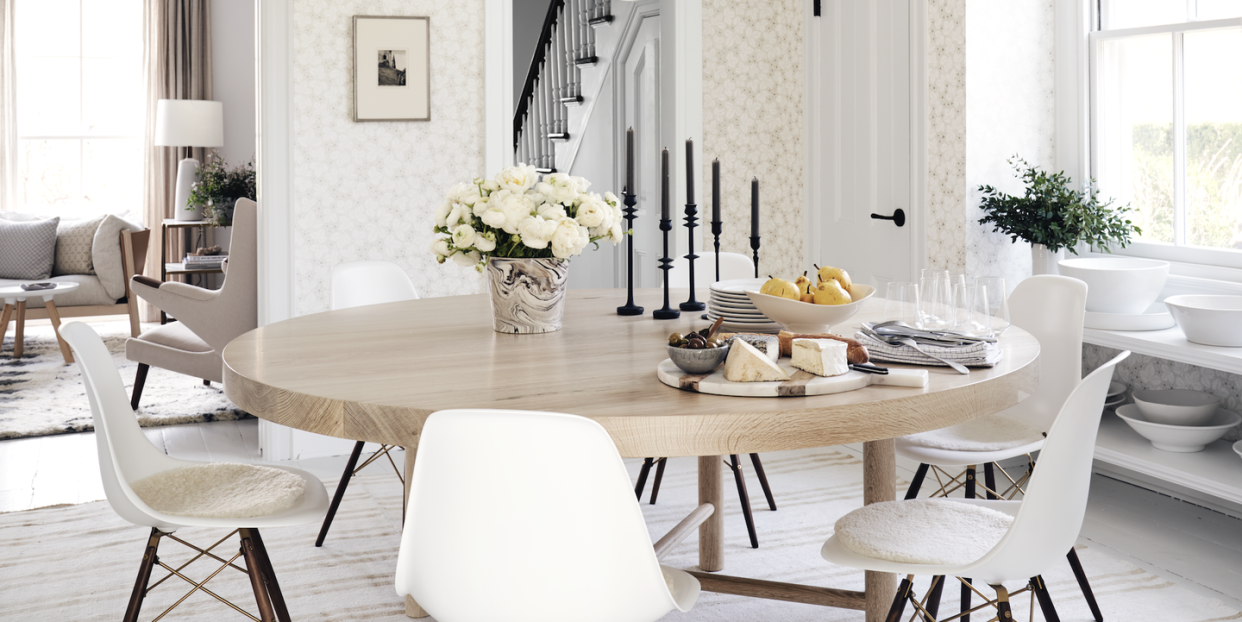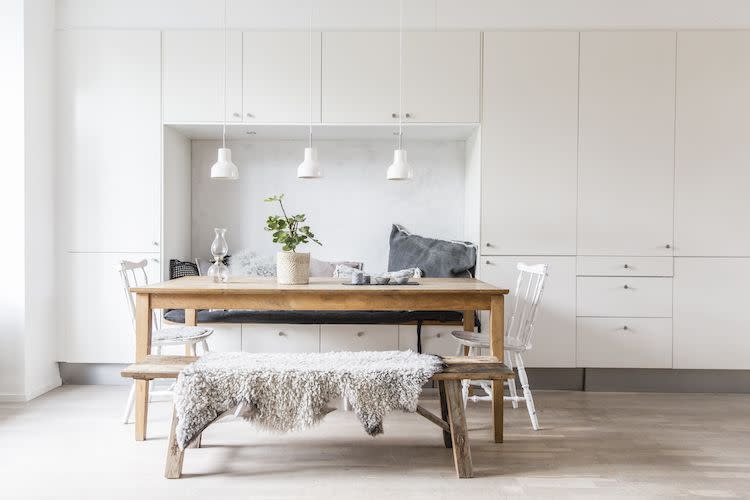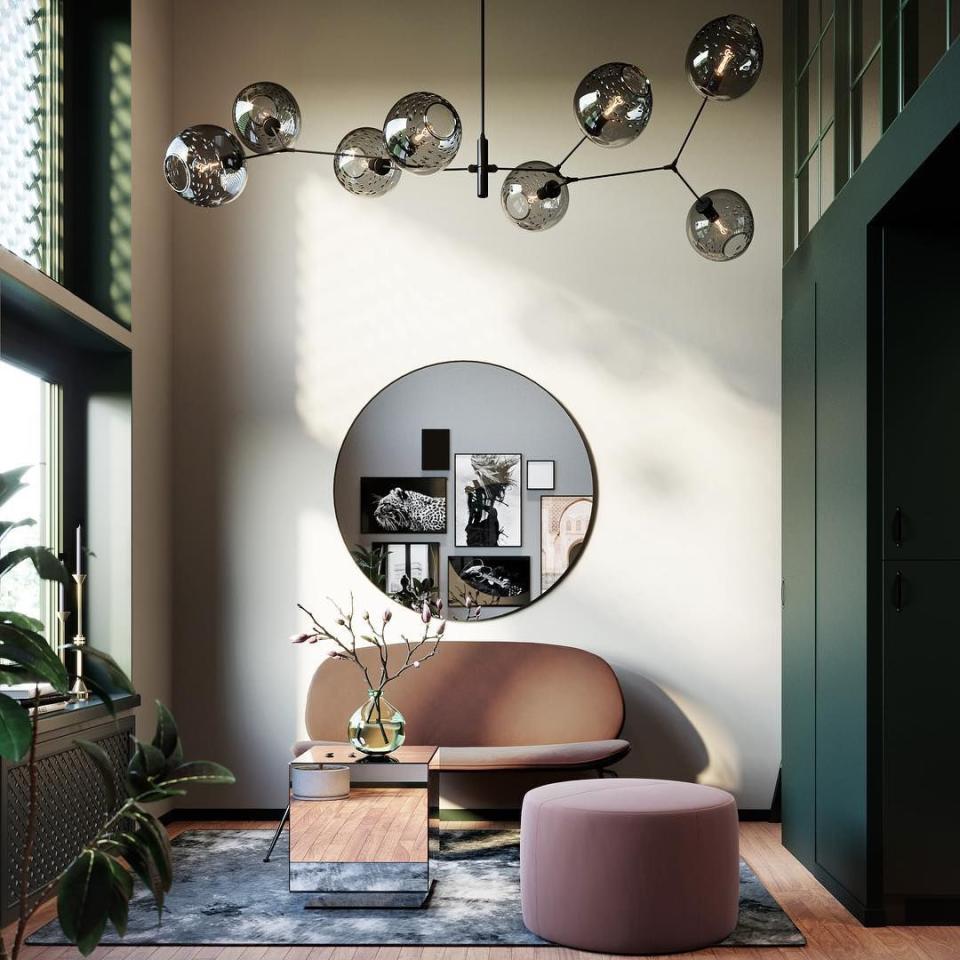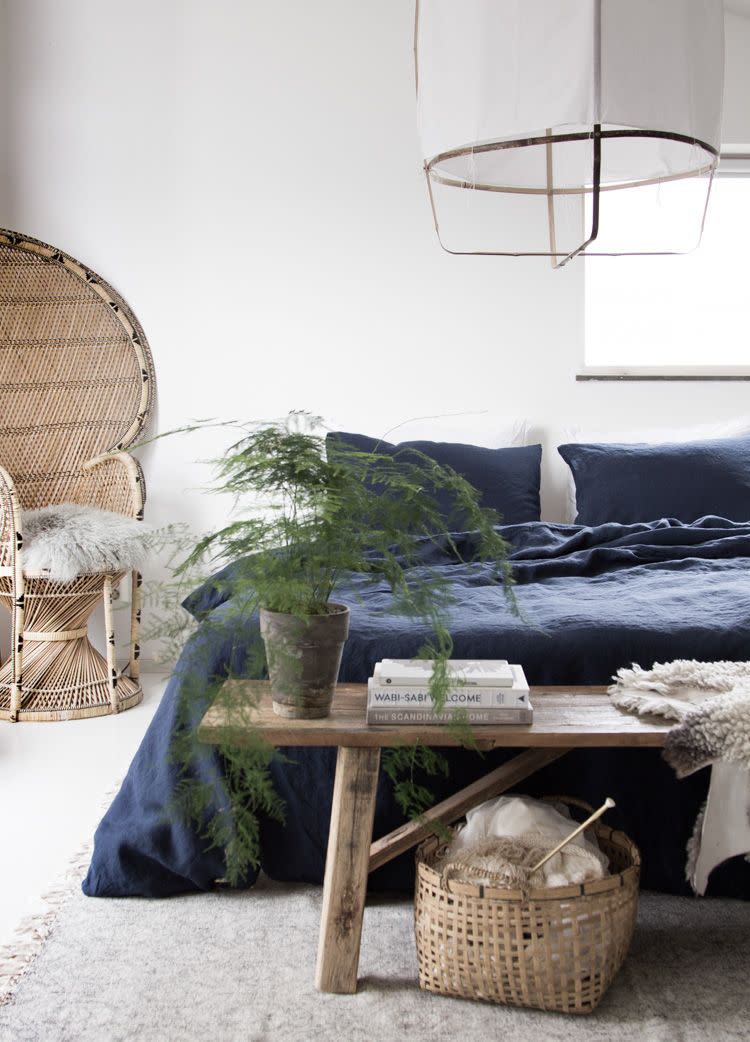A Complete Guide to Scandinavian Design

"Hearst Magazines and Yahoo may earn commission or revenue on some items through the links below."
Scandinavian design is the epitome of simplicity with an emphasis on function and beauty. It’s minimal and clean yet cozy and influenced by nature. Basically, it’s the ideal design style for someone who wants to feel like their home is constantly giving them a warm embrace and making their life easier. If this sounds like your ideal interior environment but don’t know exactly how to bring it to life, don’t fret. Ahead, we’ve broken down everything you need to know about Scandinavian design, so you can swiftly infuse the style into your home and enjoy all it has to offer.
First, what does Scandinavia encompass?
Most commonly, Scandinavia refers to Norway, Sweden, and Denmark. Some also consider Finland and Iceland to be a part of the region depending on the context. The countries have plenty of similarities and are certainly seen as united through the marketing of their design preferences and values. But they also possess distinguishing characteristics within the industry as well as beyond it.
Scandinavian Design Is Minimal
Yes, it has nuances that differentiate it from minimalism, modernism, and contemporary decor. But at its most basic level, Scandinavian design is minimal with a focus on simplicity and functionality. There's not a lot of clutter. It incorporates natural materials and takes a "democratic approach" to design, says Niki Brantmark, author of Lagom: The Swedish Art of Living and the blog My Scandinavian Home. "Scandinavian design has a tradition of striving to ensure everyone has access to good design, not just the elite," she explains. "This is why you’ll see beauty in everyday pieces. IKEA is a good example of this."
It's Inspired by Nature and Climate
Scandinavian design emerged in the 1930s thanks to designers and architects like Josef Frank, Alvar Aalto, and Arne Jacobsen. By the 1950s, it grew in international popularity. A design show traveling through the U.S. and Canada in 1954-1957 promoted works by Nordic designers emphasizing simple designs inspired by the nature and climate of the region. "The style was well received, and people appreciated the ‘beauty in the everyday’ aspect," Brantmark says.
The Lunning Prize also helped grow the design style's relevance during the '50s. Basically the Nobel Prize for Scandinavian design, the award was instituted by Frederik Lunning—a Danish-born businessman and owner of the Georg Jensen Inc. store in New York at the time. It was awarded to stellar Scandinavian designers between 1951 and 1970.
It Centers on Improving Daily Life
At its core, Scandinavian design seeks to improve everyday life. Nordic countries get as little as seven hours of daylight in the winter, so lighting is key. You won't find wall-to-wall carpeting. Instead, it features natural hardwood or white flooring to make the space seem brighter. Furniture is functional, doubling as storage, and window treatments are nonexistent or sheer at most in order to maximize the light that comes in.

Texture Keeps It From Feeling Sterile
Minimalism is often considered cold and stark to critics, but Scandinavian design creates warmth through textiles, rather than cluttering things with a lot of decorative items. Soft textiles—such as sheepskin, wool, and mohair—are a necessity in cold climates and keep the aesthetic paired down but add some visual interest. The rationale: Anything added should have a practical purpose.
The Color Palette Is Mainly Neutral
Neutral colors are the foundation of Scandinavian design since natural light can be rare in Nordic homes. But color can be used as an accent, though still in earthy tones like dark blues, greens, grays, and browns. The nature-inspired shades can aid in creating a cocoon-like space.

It's Not the Same as Hygge
Hygge exploded in popularity back in 2016, and the devotion to the concept hasn't seen any slow down. But don't subscribe to the common misconception that it's a design style. The Danish word associated with coziness is a state of mind. You can seek to create it with your decor, which much of Scandinavian design does, but the two are not interchangeable.
Scandinavian Design Is All About Balance
Similar to the idea of hygge, Sweden uses the word lagom, which means not too little, not too much—basically, finding the balance. "In my home, I like to find a balance between minimalist and cozy," Brantmark says. "I love to mix and match old and new, and try to ensure no two items are the same for a relaxed look." That means adding lots of textiles in the form of sheepskins, linen cushions, and layered rugs to boost the curl-up-and-relax factor while keeping furniture and decor minimal and streamlined.

It's Timeless
"The beauty of Scandinavian design is that it’s incredibly versatile," Brantmark says. "The simple aesthetic means it can fit seamlessly with almost any style and era, while the sculptural, organic shape adds an element of drama to a room."
You can deck your space out completely in Scandinavian-inspired decor, or you can incorporate pieces sparingly if you want to dabble with the design. Just make sure to "keep the space around [the items] decluttered so you can more easily appreciate the beauty of each item," Brantmark says. And if you're not sure where to start, Brantmark recommends shopping at Design Within Reach, eBay, West Elm, and, of course, IKEA.
Follow House Beautiful on Instagram.
You Might Also Like

